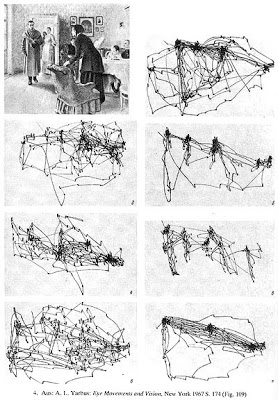The Expressive Figure Assignment
Concept: Trajectories
Materials:
Materials
- Vine or Willow Jumbo Charcoal ( Generals, Coates, etc.), Graphite lead and holder
- Dry Media Sources: Hard Pastel sticks (NuPastel, Creatacolor, etc.) Conte Crayon, Stabilo Pastel Pencils or equivalent,
- Canson Mi Tientes toned paper or Strathmore toned 90 lb drawing paper 12" x 19" or similar Ledger or any similar 60 to 90 lb paper
- Faber-Castell Kneaded Eraser or Chamois cloth
Charcoal (Vine/Willow)Red Ochre/Sanguine (Pastel/Conte)Black ( Compressed Charcoal/Pastel)Ivory/White (Pastel/Conte)
Starting with charcoal, use a collection of sweeping inverse radial arcs to describe the action /gesture of the figure. Visualize these arcs as defining the "envelope" of the figure, ie. within the overlapping arcs is the area that the figure occupies, and outside of these arcs is the "flux" or everything that's background or negative space.
Then within the interior space defined by these arcs/envelope, quickly and lightly sketch a gestural mannikin of the pose beginning at the pelvis. This mannikin is geometrically analogous to a "doll" with a peanut-shaped volume approximating the torso, cylinders for limbs and neck, and an ovoid for the skull. Orient the mannikin in space by drawing a "medial line" through the center of the front and back of the torso as well as the center and back of the neck and skull.
To establish an armature that will support a mannikin standing in space, indicate a vertical "isonomic vector" that extends from the sternum to the inside ankle of the weight-bearing leg. Remember- the high hip indicates the weight-bearing leg, and the low hip is the balance leg. This is known as contraposto The high hip also indicates that the shoulder on that side of the body will be the lower shoulder.
On a reclining or encumbant figure visualize how the figure distributes its weight and how this is transferred to the model stand, chair, or support . Remember, the figure is only a conduit for this gravitational force which is ultimately transferred through the body into the support and finally towards the center of the earth's magnetic core. Imagine in your mind which support is bearing the most weight in terms of the overall weight and proportion of the amount of force being transferred into primary, secondary, and tertiary gravitational force"vector" exit points. This is known as "plotting" the isonomia. For example- 60%, 30%, 10%.
Identify which area on the figure is attracting the gaze of the viewer's eye with the most urgency. Usually, this is an area of extreme contrast (frisson) or is an area or part of the anatomy that has the most psychologically symbolic value, such as the face or eyes, the hands, the genitals, etc. See if you can create a map, similar to these Yarbus eye-tracking maps, of the proportional trajectory of the viewer's eye through the drawing. See if you can adapt the inverse radial arcs of the action armature to the proportional eye-tracking maps of the drawing. This is known as creating trajectories. Notice how these trajectories are not dependent on anatomy but are determined mostly by shapes, contrast/frisson, and the aforementioned psychological symbolic content. Consider how George Platt Lynes used trajectories in the compositions of his figurative photography. Also, consider how Guido Reni similarily created trajectories in his figural compositions
Yarbus Eye Tracking
George Platt Lynes









.jpg)














No comments:
Post a Comment